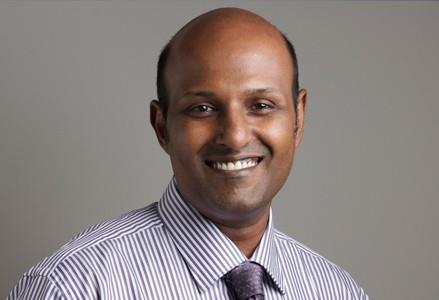| |
 Dr Boby Varkey Maramattom,Consultant, NeurologistAster Medcity, Kochi One of the most misunderstood conditions is epilepsy.
Commonly known as ‘fits’, epilepsy is actually a group of neurological diseases
characterized by epileptic seizures, also known as ‘seizure disorders’. Epilepsy
is the fourth most common neurological disorder and affects people of all ages.
There are 50 million people living with epilepsy
worldwide, and about 10 million in India. Many people with active epilepsy do
not receive appropriate treatment for their condition, leading to large
treatment gap. The lack of knowledge of available treatment options, poverty,
cultural beliefs and stigma contribute to the treatment gap. To clear
misconceptions and promote a clearer understanding of epilepsy, National
Epilepsy Day is observed on November 17 every year in India.
Symptoms of Epilepsy
Characterized by unpredictable seizures that can cause other health problems,
epilepsy is a spectrum condition with a wide range of seizure types varying from
individual to individual. Public perception and misunderstanding of epilepsy
causes challenges often worse than the seizures
Epilepsy is a chronic disorder, the main feature of which is recurrent seizures
which may be without any apparent cause. Patients with epilepsy may have more
than one type of seizure and may have other symptoms of neurological problems as
well. It is when clinical and family history, EEG testing, and outlook are
similar among a group of people with epilepsy that the condition can be defined
as a specific epilepsy syndrome.
The starting place of epilepsy is the brain. Although the symptoms of a seizure
may affect any part of the body, the electrical episode that leads to the
symptoms occurs in the brain. The short term effects and long term consequences
depend on the location, method of spread, area of the brain affected and length
of the episode. Having seizures and epilepsy can affect one's safety,
relationships, work, driving and much more.
Diagnosing Epilepsy
Diagnosing epilepsy is like putting the pieces of a jigsaw puzzle together with
information from the patient, his family and a few key tests. Recurrent
unprovoked seizures that were not caused by some known and reversible medical
condition like alcohol withdrawal or very low blood sugar is one indication of
epilepsy.
The seizures in epilepsy may be related to a brain injury or a family
tendency, but often the cause is completely unknown. Details of the seizure, the
type and other information about the event, followed by more information through
a detailed medical history and examination, blood tests, EEG tests, and brain
imaging tests such as CT and MRI scans, help the physician reach a proper
diagnosis. The tests give information about the electrical activity of the
brain, what the brain looks like and possible causes of seizures. All the
information is put together with how the individual is feeling and how the
seizures may be affecting the way the brain works. It should be noted that the
word "epilepsy" does not indicate anything about the cause of the person's
seizures or their severity.
Risk Factors of Epilepsy
Risk factors for epilepsy include babies who are born small for their age,
babies who have a seizure in the first month of life, brain injury, brain
tumors, abnormal blood vessels in the brain, infections of the brain like
meningitis or encephalitis, cerebral palsy, stroke resulting from blockage of
arteries, conditions with developmental disabilities, late stage Alzheimer’s
disease, febrile seizures that last a long duration, use of illegal drugs and a
family history of epilepsy.
Patients may notice some triggers that precipitate or provoke seizures. It is
important to recognize these triggers if they exist as patients can learn how to
modify their lifestyle or environment to lessen the risk of triggers. These
triggers may include lack of sleep, missed medications, psychological stress,
alcohol, poor eating habits, flashing lights or specific foods.
Treatment
The aim of treatment for epilepsy is to achieve ‘No seizures and no side
effects’. Treatments are available that can stop or control seizures for most
people with seizures and epilepsy. Medicine is the most common way of treating
epilepsy and is almost always the first treatment tried which will successfully
control seizures in 70% of patients. The first step is to find the right
medicine for each person. While the majority of people can do well with the
first one or two medicines tried, others find that medications don’t work. And
for others, seizure medication may cause bothersome side effects.
There are many
different medicines that can prevent or stop seizures. Some medicines work
better for certain kinds of seizures than for others. If one medicine fails,
another may work better. The medications work to stop seizures from occurring.
Surgery is an alternative for some people whose seizures cannot be controlled by
medications. Epilepsy surgery can be especially helpful to people who have
seizures from structural brain problems such as benign brain tumors, strokes or
malformations of blood vessels.
|


